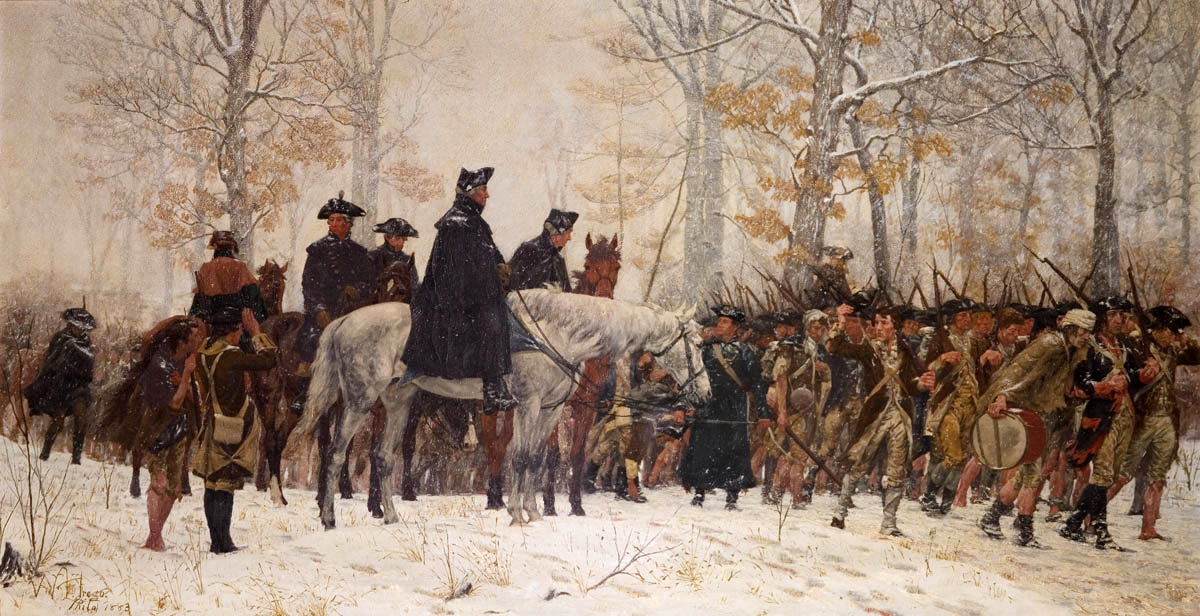Part of a series of articles titled Valley Forge Underfoot - Shoes of the Encampment.
Previous: Supply Challenges
Article
Part Three of a five-part series about the footwear worn during the Valley Forge winter encampment.
Did soldiers really leave blood upon the frozen ground as they marched into Valley Forge? This is a popular story, but one that reeks of romanticism.
So, is there any truth to it?
In his 1830 memoir, Joseph Plumb Martin described how prior to the march, he had made a pair of moccasins from raw cowhide. The hard edges chafed his ankles but protected his feet from exposure:
“The only alternative I had was to endure this inconvenience or go barefoot, as hundreds of my companions had to, till they might be tracked by their blood upon the rough frozen ground.”1
Due to the ambiguity of this passage, we do not know whether Martin personally saw his comrades’ feet bleeding, or if he related a popular postwar narrative.
But other evidence supports Martin’s account of makeshift moccasins. On November 22, 1777, General George Washington ordered raw hides distributed, and offered a ten-dollar reward to anyone who could
“produce the best substitute for shoes.”2
Some soldiers had shoemaking experience, and commanders wanted a successful model they could use to scale-up production. Martin likely made his moccasins as part of this larger, internal attempt to supply the Continental Army’s footwear.
However, even if Washington had success with this endeavor, it would still take time to implement.

Museum of the American Revolution
Just eleven days later, Major General William Alexander (Lord Stirling) reported:
“above one half of those in Camp are […] walking barefooted on the Ice or frozen Ground.”3
This corresponds with Washington’s December 23, 1777 letter to Henry Laurens, the President of the Continental Congress. In it, Washington wrote:
“A number of Men [remain] confined to Hospitals for want of Shoes, & others in Farmers Houses on the same account, we have by a Field return this day made, no less than 2898 Men now in Camp unfit for duty, because they are barefoot and otherwise naked” (i.e., without a complete uniform).4
This comprised nearly one quarter of Washington’s army.
Yet, the most interesting primary source evidence on this topic comes from Washington later in 1778. We will analyze that correspondence in the next installment.
Part of a series of articles titled Valley Forge Underfoot - Shoes of the Encampment.
Previous: Supply Challenges
Last updated: March 18, 2021